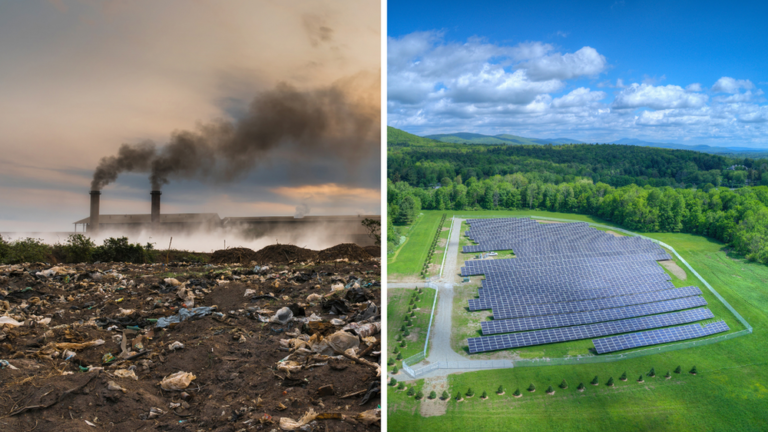solargardens
May 4, 2023
Electricity generation is responsible for a significant portion of greenhouse gas emissions, air pollution, and other environmental issues. Traditional electricity generation methods involve burning fossil fuels such as coal, oil, and natural gas. This process releases large amounts of carbon dioxide, methane, and other pollutants into the atmosphere, contributing to climate change and harming human health.
Community solar is a relatively new way of generating electricity that has many environmental benefits. In this blog, we will explore how community solar works and how it can help reduce our carbon footprint and protect the environment.

Traditional electricity generation methods have significant negative impacts on the environment. The most common method of electricity generation is by burning fossil fuels such as coal, oil, and natural gas. According to the U.S. Environmental Protection Agency, this process releases large amounts of carbon dioxide, methane, and other pollutants into the atmosphere.
Carbon dioxide is a greenhouse gas that contributes to climate change by trapping heat in the atmosphere. Methane is another potent greenhouse gas that is released during the production and transportation of natural gas. Other pollutants released during fossil fuel combustion include sulfur dioxide, nitrogen oxides, and particulate matter, which contribute to air pollution and harm human health.
In addition to the environmental impacts of fossil fuel combustion, the extraction and transportation of fossil fuels can also have significant negative impacts on the environment. This can include habitat destruction, water pollution, and the release of toxic chemicals into the environment.

“Unearthing, processing, and moving underground oil, gas, and coal deposits take an enormous toll on our landscapes and ecosystems. The fossil fuel industry leases vast stretches of land for infrastructure, such as wells, pipelines, and access roads, as well as facilities for processing, waste storage, and waste disposal. In the case of strip mining, entire swaths of terrain—including forests and whole mountaintops—are scraped and blasted away to expose underground coal or oil. Even after operations cease, the nutrient-leached land will never return to what it once was.
As a result, critical wildlife habitat—land that is crucial for breeding and migration—ends up fragmented and destroyed. Even animals able to leave can end up suffering, as they’re often forced into less-than-ideal habitat and must compete with existing wildlife for resources.”
Community solar is a system that allows multiple households or businesses to share a single solar energy system. Instead of installing solar panels on their rooftops, community solar subscribers can purchase a share of discounted energy from a larger solar installation that is located off-site. The electricity generated by the solar panels is then distributed to the subscribers, who receive credits on their energy bills.
Community solar has several environmental benefits when compared to traditional electricity generation methods. First and foremost, community solar generates electricity using a renewable resource – the sun. Unlike fossil fuels, solar energy does not produce carbon dioxide, methane, or other greenhouse gases during electricity generation.
In addition to reducing greenhouse gas emissions, community solar can also help reduce other types of air pollution. Fossil fuel combustion releases particulate matter, sulfur dioxide, and nitrogen oxides into the atmosphere, which can contribute to respiratory problems and other health issues. By generating electricity without burning fossil fuels, community solar can help reduce these harmful pollutants in the air.
Finally, community solar can help reduce our reliance on fossil fuels and move us towards a cleaner, more sustainable energy future. By supporting the development of community solar projects, individuals and communities can help drive the transition to a more renewable energy system that protects the environment and promotes a healthy planet.
Community solar is a promising alternative to traditional electricity generation methods that can help reduce our carbon footprint and protect the environment. By generating electricity using renewable resources like the sun, community solar can help reduce greenhouse gas emissions and other harmful pollutants. As the demand for clean energy grows, community solar is poised to play an increasingly important role in our energy future.
Cities across the United States have experienced record-breaking heat this February, raising eyebrows and concerns alike. While winter is typically...
Cities across the United States have experienced record-breaking heat this February, raising eyebrows and concerns alike. While winter is typically...
Explore how Solar Energy Expands to Low-Income Communities. We cover the rise of community solar projects, the impact of government...
Join Community Solar with Solar Gardens to redeem this offer
- Enter your contact info to receive your promo code -